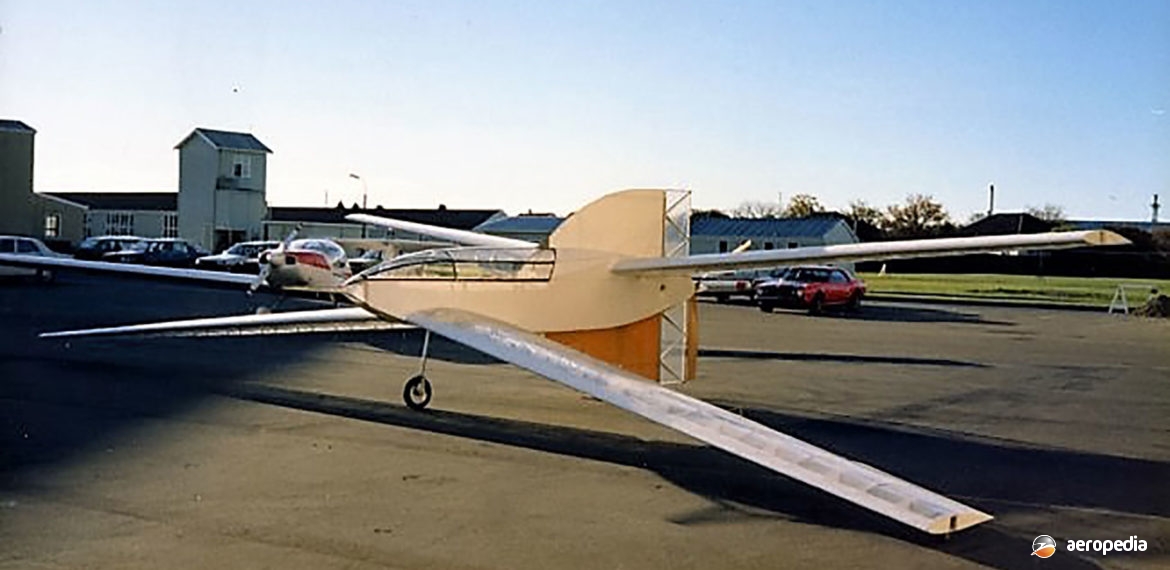Photograph:
The Boffin Coffin during early testing at Wigram, NZ (RAeS collection)
Country of origin:
New Zealand
Description:
Single-seat human-powered aircraft
Power Plant:
Human-power
Specifications:
- Wingspan: 13.7 m (45 ft)
- Forward wing area: 13 m² (140 sq ft)
- Rear wing area: 11 m² (120 sq ft)
- Weight: 57 kg (126 lb)
History:
The Boffin Coffin was a man-powered aircraft designed by Mr Donald Walther of Christchurch, New Zealand, to be an entrant in the man-powered aircraft competition announced by British Industrialist, Henry Kremer, for the first human-powered aircraft to complete a figure-of-eight course covering a distance of 1.6 km (1 mile), the course to include a 3.048 m (10 ft) pole that the aircraft had to fly over at the beginning and conclusion of the flight.
Work commenced in 1982 and it soon became known as the Boffin Coffin. Construction was of resin-laminated aluminium-alloy sheet and EPS, covered with Melinex. The undercarriage was quite tall, being 0.91 m (3 ft) long. The pilot was in a prone position, head first, operating pedals driving a propeller. The aircraft had a shock absorber in the drive between the rear-wheel and the propeller.
Flight trials commenced at RNZAF Base Wigram near Christchurch by a motor-vehicle towing the machine, Mr Walther initially being the pilot. Early testing was successful, Mr Walther stating “when I took my eyes off the tiller and looked down I was looking down on the roof of the car. The aircraft came down very lightly, but I could hardly call it a controlled flight. It is a mystery just how much control there is with these ailerons on the front wing, how much they contributed to my safe landing and how much was pure luck”. Although the first flight was successful, the aircraft suffered some damage on its second flight when it landed tail-first.
In 1987 testing began with pilots Steven Preest and Trent Hiles, at this time the aircraft being fitted with pedals for the pilot to operate. However, it was found the easterly breezes over the military airbase became unsuitable for human-powered flight. In fact even in the hangar when stored the aircraft was blown into the hangar wall, causing considerable damage. It also received damage in the hangar by people unaware of the delicate nature of the aircraft.
In July 1988 work on the project was abandoned and it was placed in storage.

